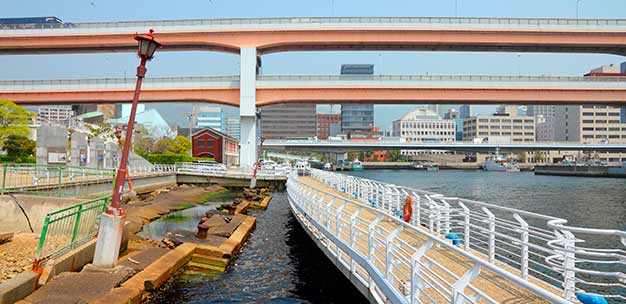A combination of microeconomics and quake-engineering reveals greater vulnerability of clustered manufacturing plants to natural disasters
Published online 29 October 2015

Factories that group together in industrial clusters are exposed to a high risk of failure up to ten years after suffering damage from a major earthquake.
© tupungato/iStock/Thinkstock
Setting up local factories in close proximity to competitors can bring enormous opportunities for growth, but poses a high risk of long-term failure to recover from a massive earthquake, according to a study by an international team of economists led by Toshihiro Okubo at Keio University1.
"Many people believe that industrial agglomeration in large cities makes companies resilient to natural disasters," Okubo says. "But our study reveals a lot of negative aspects."
Many studies have looked at how natural disasters undermine global, regional and local economies in developing countries, but few have focused on developed economies. This type of analysis matters for Japan because of the imminent threat of another large earthquake following the devastating shake that hit the northeastern Tohoku region of Japan in 2011.
The researchers looked into the 6.9-magnitude earthquake that struck the western port city of Kobe in 1995, claiming 4,500 lives. They used the government's highly detailed mapping data, building-level surveys, and plant-level economic surveys, created using an advanced geographic information system. The data assigned one of five colors to each of the 1,846 manufacturing plants across the city according to the degree of damage they incurred. The researchers used this information to calculate the associated percentage loss of value for each building, area and road. Leveraging Okubo's expertise in theoretical and empirical studies of economic geography and international trade in the presence of firm heterogeneity2, the team created various parameters for assessing the effect of earthquake damage on plant survival and the impact of clustering on long-term survival.
"By combining an economic approach with earthquake engineering, we learned that even though plants in clusters survived the earthquake, many of them suddenly failed after five to ten years," says Okubo.
Manufacturing industries such as the rubber and non-ferrous metals industries were heavily clustered and their plants were severely damaged. Damaged plants were more likely to fail than undamaged plants within the same cluster amid increased competition and cannibalization, rather than cooperation to survive difficult times. Such negative impacts of building damage persisted much longer than expected. "The result also reaffirmed the importance of strengthening structures to make them more quake resistant," says Okubo.
Okubo's cross-disciplinary approach matches well with Keio's commitment to practical research. "We were able to understand the long-term impact of earthquakes, which economic data alone could not have explained." He is now expanding his research scope to cover the aftermath of other disasters, including the Tohoku quake and nuclear accidents in Fukushima.
References
- Cole, M. A., Elliott, R. J. R, Okubo, T. & Strobl, E. Natural disasters, industrial clusters and manufacturing plant survival. RIETI Discussion Paper Series 15-E-008 (2015). | article
- Baldwin, R. E. & Okubo, T. Heterogeneous firms, agglomeration and economic geography: Spatial selection and sorting. Journal of Economic Geography 6, 323-346 (2006). | article